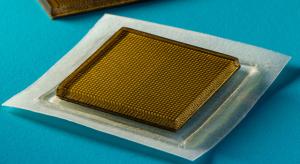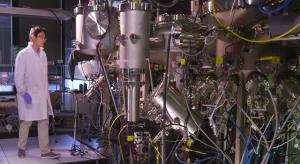MIT Engineers Grow ‘Perfect’ Atom-Thin Materials on Industrial Silicon WafersTechnique could lead to next-generation transistors based on materials other than silicon
Mon, 02/06/2023 - 12:01
(MIT: Cambridge, MA) -- True to Moore’s Law, the number of transistors on a microchip has doubled every year since the 1960s. But this trajectory is predicted to plateau soon because silicon—the backbone of modern transistors—loses its electrical… With New Heat Treatment, 3D-Printed Metals Can Withstand Extreme ConditionsTechnique may enable energy-efficient 3D printing of blades for gas turbines or jet engines
Tue, 11/29/2022 - 12:00
(MIT: Cambridge, Massachusetts) -- A new MIT-developed heat treatment transforms the microscopic structure of 3D-printed metals, making the materials stronger and more resilient in extreme thermal environments. The technique could make it possible…
Wed, 08/17/2022 - 12:01
Ultrasound imaging is a safe and noninvasive window into the body’s workings, providing clinicians with live images of a patient’s internal organs. To capture these images, trained technicians manipulate ultrasound wands and probes to direct sound…
Thu, 04/30/2020 - 12:02
The brain is one of our most vulnerable organs, as soft as the softest tofu. Brain implants, on the other hand, are typically made from metal and other rigid materials that, over time, can cause inflammation and the buildup of scar tissue.
MIT…
Wed, 02/26/2020 - 12:01
First published Feb. 5, 2020, on MIT News.
At the heart of any electronic device is a cold, hard computer chip, covered in a miniature city of transistors and other semiconducting elements. Because computer chips are rigid, the electronic devices…
Thu, 02/20/2020 - 12:03
A modern airplane’s fuselage is made from multiple sheets of different composite materials, like so many layers in a phyllo-dough pastry. Once these layers are stacked and molded into the shape of a fuselage, the structures are wheeled into…
Wed, 12/04/2019 - 12:02
In today’s factories and warehouses, it’s not uncommon to see robots whizzing about, shuttling items or tools from one station to another. For the most part, robots navigate pretty easily across open layouts. But they have a much harder time winding…